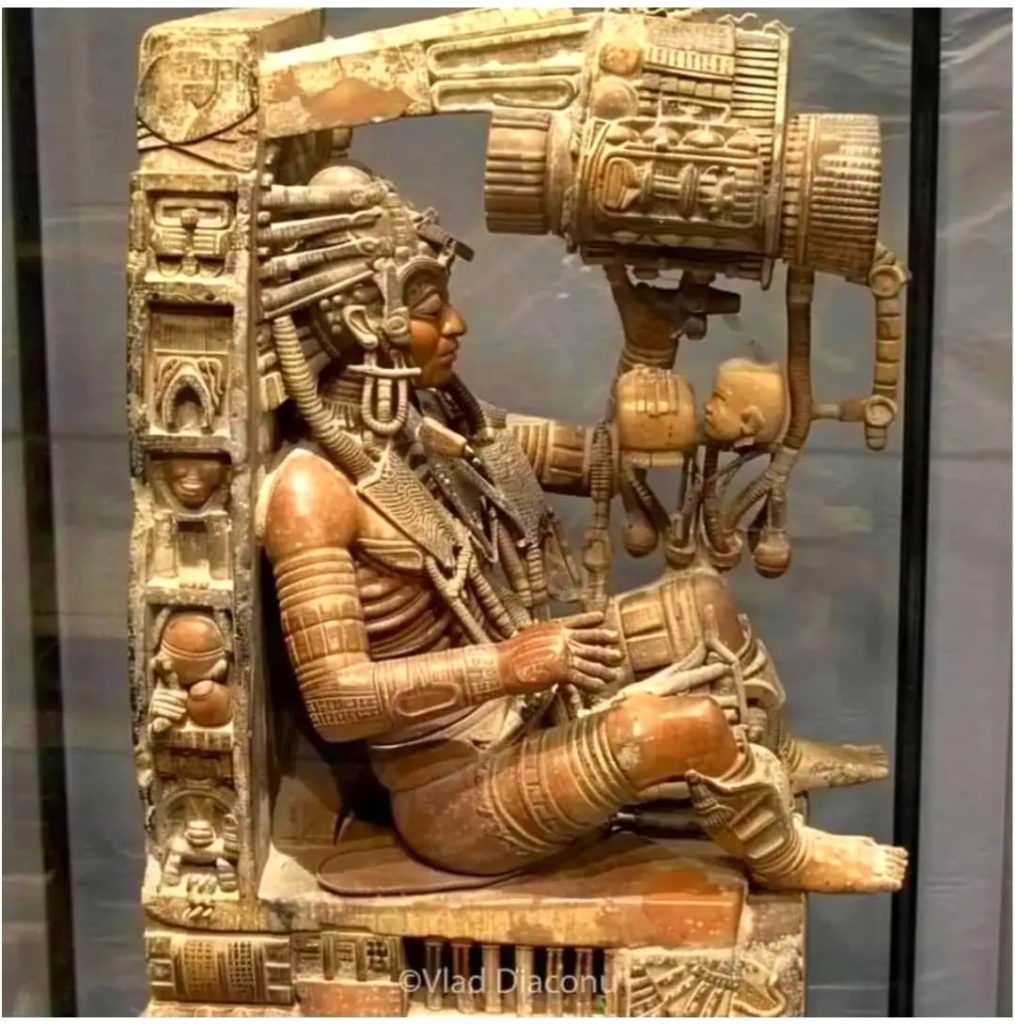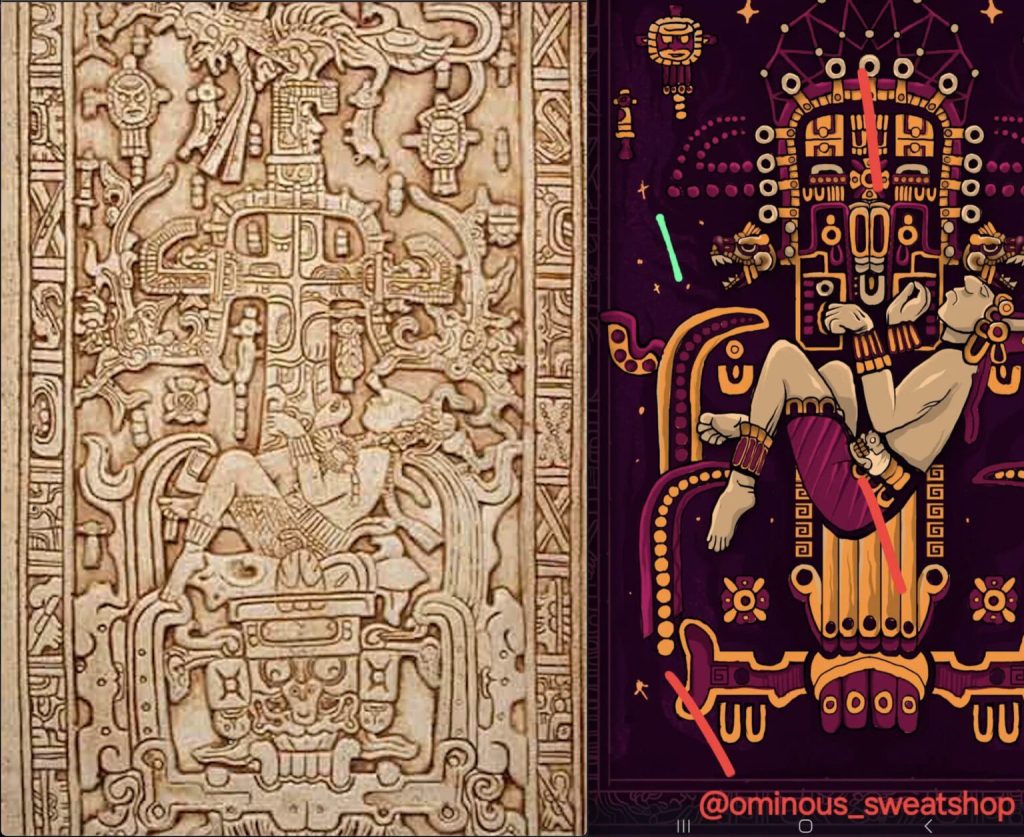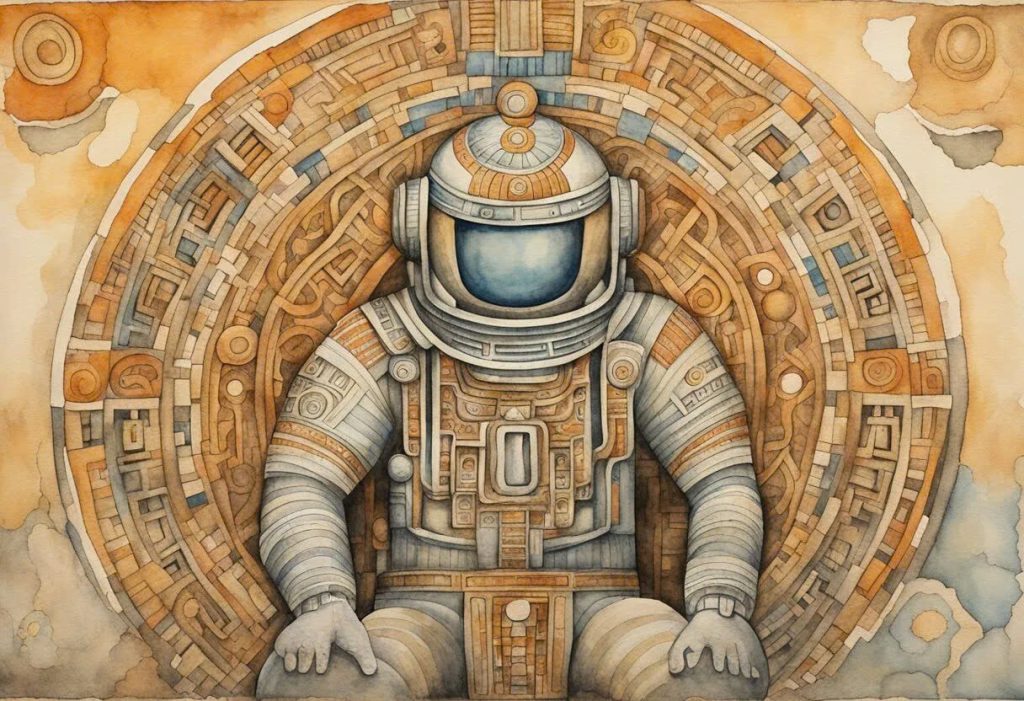In the heart of the ancient Maya civilization lies one of archaeology’s most captivating and debated discoveries – the sarcophagus lid of K’inich Janaab’ Pakal, commonly referred to as Pakal the Great. This exquisite 7th-century artifact, unearthed in the ancient city of Palenque, continues to intrigue historians, archaeologists, and enthusiasts alike. Nicknamed “The Palenque Astronaut,” the sarcophagus lid has ignited countless theories about its true meaning, ranging from deeply spiritual interpretations rooted in Mayan cosmology to bold speculations involving extraterrestrial connections.
At first glance, the sarcophagus lid’s intricate carvings reveal a scene rich in symbolism and artistic mastery. Among the most striking features is the central figure, identified as Pakal, depicted in a reclined position surrounded by elaborate motifs. Some theorists suggest that this depiction resembles an astronaut seated within a mechanical structure, possibly a spacecraft. This interpretation, though controversial, was popularized in the late 20th century by Erich von Däniken in his 1968 book “Chariots of the Gods.” In this work, von Däniken proposed that ancient astronauts might have visited the Mayan civilization, leaving behind traces of advanced technology and knowledge. While this theory has captivated the imagination of many, it remains widely debated among scholars and archaeologists.

In contrast to the extraterrestrial hypothesis, experts in Mayan history and culture provide an interpretation grounded in the civilization’s rich cosmological traditions. According to this perspective, the carvings on Pakal’s sarcophagus lid do not depict space travel but instead illustrate his sacred journey into the underworld, known as Xibalba in Mayan belief. Central to this interpretation is the presence of the World Tree, a pivotal symbol in Mayan cosmology that connects the realms of heaven, earth, and the underworld. Pakal’s position beneath the World Tree signifies his transition from mortal king to a divine ancestor, underscoring the Mayan belief in the cyclical nature of life, death, and rebirth.
The depiction of Pakal beneath the World Tree is not merely an artistic choice but a profound representation of Mayan spirituality and their understanding of the cosmos. The World Tree’s roots extend into Xibalba, its trunk anchors the earthly realm, and its branches reach into the heavens. This symbolic connection reflects the Mayan worldview, in which all aspects of existence are interconnected. Pakal’s placement in this cosmic framework emphasizes his role as a mediator between the divine and the earthly, a theme commonly found in Mayan art and literature.

Beyond its spiritual significance, the sarcophagus lid showcases the Maya’s extraordinary achievements in art and science. The intricate carvings demonstrate not only a mastery of artistic techniques but also a deep understanding of astronomical phenomena. The symbols and motifs adorning the lid are thought to reflect the Maya’s sophisticated knowledge of celestial movements and their integration of astronomy into their religious practices. This blending of science and spirituality is a hallmark of Mayan culture, revealing a civilization that sought harmony between the observable universe and their spiritual beliefs.
The Maya were renowned for their advanced astronomical systems, which enabled them to create highly accurate calendars and predict celestial events with remarkable precision. The sarcophagus lid, with its complex iconography, serves as a testament to this expertise. Scholars believe that the carvings align Pakal within the cosmic order, reinforcing his divine status and the Mayan conception of kingship as a sacred institution.
Despite the scholarly consensus favoring a cosmological interpretation, the “Palenque Astronaut” theory continues to capture the public imagination. This enduring fascination highlights humanity’s innate curiosity about the past and our desire to uncover mysteries that connect ancient civilizations to modern concepts. The allure of the extraterrestrial hypothesis lies in its ability to challenge conventional narratives and provoke thought about the possibilities of human history and contact with otherworldly beings.

However, it is essential to recognize the sarcophagus lid as more than a subject of speculative theories. It stands as a masterpiece of Mayan artistry and a window into the civilization’s complex worldview. The detailed carvings and profound symbolism provide invaluable insights into the Maya’s perception of life, death, and the cosmos. By studying this artifact, modern audiences can gain a deeper appreciation for the intellectual and spiritual achievements of the Maya, one of history’s most advanced civilizations.
The legacy of Pakal the Great and his sarcophagus lid extends far beyond the boundaries of archaeology. It represents a bridge between the ancient and the modern, reminding us of the enduring impact of cultural heritage on contemporary thought. The artwork’s intricate details and the stories they convey continue to inspire new generations of researchers, artists, and thinkers.

Ultimately, the Palenque sarcophagus lid is a testament to the Maya’s profound understanding of their place in the universe. Whether interpreted through the lens of Mayan cosmology or viewed as a spark for imaginative theories, it underscores the timeless nature of humanity’s quest to explore the unknown. As we continue to study this remarkable artifact, we are reminded of the importance of preserving and honoring the cultural treasures of the past. They not only enrich our understanding of history but also connect us to the universal themes of curiosity, creativity, and the search for meaning in the cosmos.





